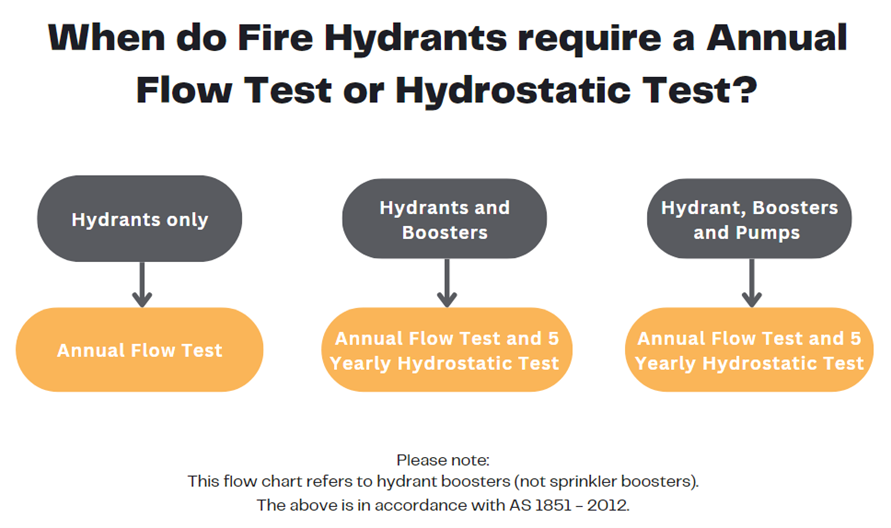Importance of Hydrant Flow and Hydrostatic Testing
Hydrant flow tests and hydrostatic tests are crucial for maintaining the effectiveness and safety of water supply and fire protection systems in Victoria, Australia. These tests ensure that your infrastructure can deliver the necessary water flow and pressure to combat fires.

Importance of Flow Tests
1. Assessing Water Supply Capabilities: Hydrant flow tests determine the available water supply in an area, particularly for firefighting. By measuring the flow rate and pressure in the water mains, these tests help assess if the system can provide adequate water during emergencies.
2. Supporting Firefighting Operations: Fire Rescue Victoria (FRV) and Country Fire Authority (CFA) rely on accurate water supply data when responding to fires. This data helps determine the number of hoses that can be connected and the overall effectiveness of firefighting efforts.
3. Urban Planning and Development: Hydrant flow tests are important for urban planning, ensuring that new developments such as owners corporation developments do not strain the existing water supply system.
4. Compliance with Standards: In Victoria, hydrant flow tests are required to meet standards like the Australian Standard AS 2419.1 for fire hydrant installations. Regular testing ensures compliance, which is crucial for minimising liability and ensuring public safety.
5. Identifying System Weaknesses: Regular hydrant flow tests can identify issues such as closed valves, blockages, or undersized pipes. Early detection of these problems allows for corrective actions, ensuring that the water supply system remains reliable, especially during emergencies. Non-conforming flow tests will appear as a defect on the subsequent Annual Essential Safety Measures Report (AESMR).
Importance of Hydrostatic Tests
1. Ensuring System Integrity: Hydrostatic tests verify the integrity of water pipes and fire suppression systems by pressurising them and checking for leaks or weaknesses. In Victoria, where public safety is paramount, these tests are essential to prevent failures that could lead to loss of life or property.
2. Compliance with Safety Standards: Hydrostatic testing is also mandated by AS 2419.1 and the mandatory baseline data for the building. In Victoria, compliance is essential to ensure system safety and reliability, reducing the risk of penalties and ensuring that the systems are fit for purpose.
3. Preventing Failures and Damage: These tests help identify potential failures before they occur, preventing water damage and ensuring that systems can withstand high pressures during emergencies. This is especially important in fire protection systems, where failures could have serious consequences.
4. Extending Infrastructure Life: Regular hydrostatic testing helps to identify and address issues early, extending the lifespan of water supply and fire protection systems. This proactive maintenance approach ensures long-term reliability and effectiveness.
5. Insurance and Risk Management: Insurance companies often require proof of hydrostatic testing as part of their risk assessment. Regular testing can help secure insurance coverage and potentially lower premiums by demonstrating timely and proactive risk management.

Discuss with your selected essential services provider should you have any queries or wish to understand how regular hydrant flow and hydrostatic tests may assist the essential fire safety of your properties.
View Comments
(0)